Blog » Statistics » 130 Key Anxiety Statistics
130 Key Anxiety Statistics for 2022
Here is the complete, up-to-date list of the most important statistics related to Anxiety, I have put together after going through many sources.
In this article, you will find verified stats about:
- Disorders
- Specific phobias
- Anxiety disorders in men vs women
- Worldwide anxiety statistics
- Suicide
- Mood and anxiety disorders
- Covid-19
- Workplace
- Other medical conditions
- Social media
And a whole lot more.
Let’s dive right in!

chapter 1:
Disorders
Here we have covered various disorders related to anxiety; Generalized Anxiety Disorder (GAD), Panic Disorder (PD), Social Anxiety Disorder (SAD), and Obsessive-Compulsive Disorder(OCD) I have got these stats by researching various articles, reports, studies, and surveys.

- In 2012, 7.3% of people in the world had an anxiety disorder, according to a systematic review published in the journal Psychological Medicine. The World Health Organization also supports this statistic, as it claims 1 in 13 people have anxiety.(source)
- Women are more likely to be affected by anxiety than men. In some disorders, such as generalized anxiety, women are twice as likely to have it as men. The age group most likely affected by anxiety is those from 30 to 44 years of age.(source)
- Worldwide Impact of Anxiety Disorders: According to the World Health Organization, 3.6 percent — or about 264 million individuals worldwide — have an anxiety disorder. Additionally, 4.6 percent of females and 2.6 percent of males globally are affected by anxiety. (source)
- Anxiety disorders are the most common mental illness in the U.S., affecting 40 million adults in the United States age 18 and older, or 18.1% of the population every year. (source)
- Anxiety disorders are highly treatable, yet only 36.9% of those suffering receive treatment. (source)
- Anxiety is the most common mental disorder, affecting 40 million adults in the U.S. population, according to the ADAA. (source)
Generalized Anxiety Disorder (GAD)
- GAD affects 6.8 million adults, or 3.1% of the U.S. population, yet only 43.2% are receiving treatment.
- Women are twice as likely to be affected as men. GAD often co-occurs with major depression.(source)
- Generalized anxiety disorder statistics show that this condition affects 2.7 percent of the population, with 3.4 percent of females and 1.9 percent of males being affected. (source)
Panic Disorder (PD)
- PD affects 6 million adults, or 2.7% of the U.S. population. Women are twice as likely to be affected as men.(source)
- Panic disorder statistics reveal that the prevalence of this condition is 2.7 percent, with 3.8 percent of females and 1.6 percent of males being affected. (source)
Social Anxiety Disorder
- The period of onset of SAD is generally late childhood and adolescence. Although it may develop at any age, it rarely occurs for the first time after the age of 25. The rate of occurrence in pre-adolescence (at around the age of 10) is around 3.5%, and this figure increases to 14% by adolescence.(source)
- SAD affects 15 million adults, or 6.8% of the U.S. population. SAD is equally common among men and women and typically begins around age 13. According to a 2007 ADAA survey, 36% of people with social anxiety disorder report experiencing symptoms for 10 or more years before seeking help.(source)
- According to social anxiety disorder statistics, this condition impacts 7.1 percent of the population, 8 percent of women and 6.1 percent of men. (source)
Obsessive-Compulsive Disorder (OCD)
- OCD affects 2.2 million adults, or 1.0% of the U.S. population. OCD is equally common among men and women. The average age of onset is 19, with 25 percent of cases occurring by age 14. One-third of affected adults first experienced symptoms in childhood.(source)
- According to the report on the prevalence of mental disorders in the European Union, anxiety disorders are the most common ones, affecting 5.4% of the population. Depressive disorders are also prevalent in the EU, affecting more than 21 million people, or 4.5% of the population.(source)
chapter 2:
Specific Phobias
Here are the statistics on specific phobias associated with anxiety.
I talk about PTSD and major depressive disorders.
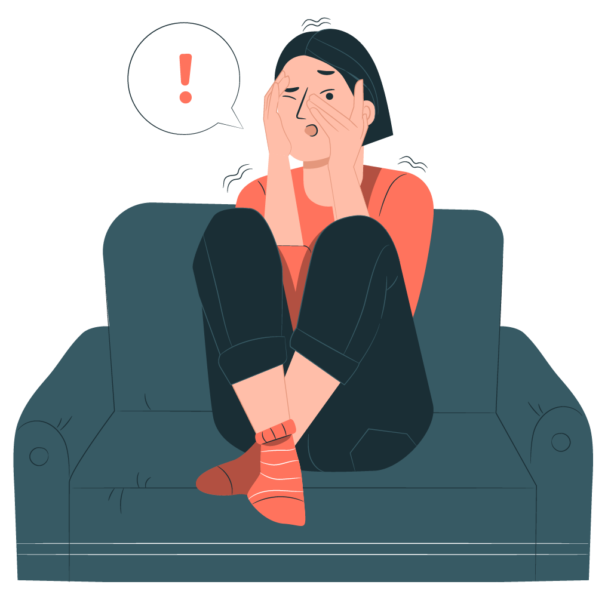
- Women are twice as likely to be affected as men.
- Specific phobias affect 19 million adults, or 8.7% of the U.S. population.
- Symptoms typically begin in childhood; the average age-of-onset is 7 years old.(source)
- Specific phobias are the most common anxiety disorders, impacting 9.1 percent of the population. According to phobia statistics, rates vary based on gender, with 12.2 percent of women and 5.8 percent of men being affected. (source)
- Obsessive-compulsive disorder (OCD) and post-traumatic stress disorder (PTSD) are closely related to anxiety disorders, which some may experience at the same time, along with depression.(source)
- OCD statistics show a prevalence rate of 1.2 percent for OCD. The condition affects 1.8 percent of women and only 0.5 percent of men. (source)
Post-traumatic Stress Disorder (PTSD)
- PTSD affects 7.7 million adults, or 3.5% of the U.S. population.
- Women are more likely to be affected than men.
- Rape is the most likely trigger of PTSD: 65% of men and 45.9% of women who are raped will develop the disorder.
- Childhood sexual abuse is a strong predictor of lifetime likelihood for developing PTSD.(source)
- PTSD facts and statistics show that this condition occurs in 3.6 percent of the population or 5.2 percent of women and 1.8 percent of men. (source)
Major Depressive Disorder
- The leading cause of disability in the U.S. for ages 15 to 44.3.
- MDD affects more than 16.1 million American adults, or about 6.7%of the U.S. population age 18 and older in a given year.
- While major depressive disorder can develop at any age, the median age at onset is 32.5 years old.
- More prevalent in women than in men.(source)
- Persistent depressive disorder, or PDD, (formerly called dysthymia) is a form of depression that usually continues for at least two years.
- Affects approximately 1.5 percent of the U.S. population age 18 and older in a given year. (about 3.3 million American adults). Only 61.7% of adults with MDD are receiving treatment. The average age of onset is 31 years old. (source: National Institute of Mental Health)
chapter 3:
Anxiety Disorders in Men vs. Women
Here’s a comparison of anxiety rates among men and women.
Women are more common to have anxiety disorders than men. Here are more such interesting stats.
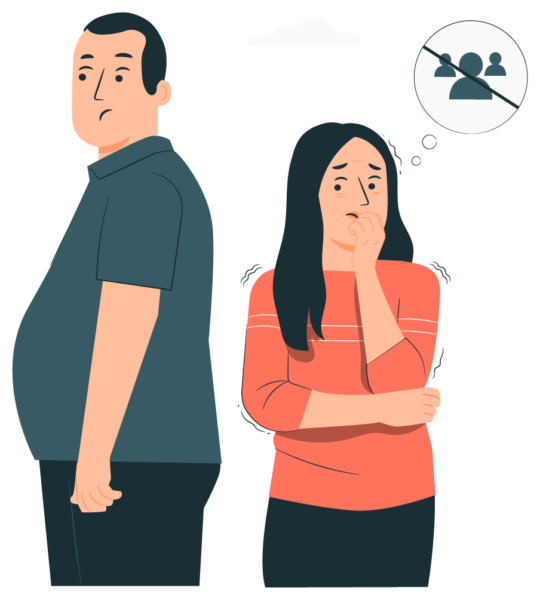
- Anxiety demographics indicate who is most likely to experience anxiety based on factors such as gender and race. Anxiety disorders in women are more common than anxiety disorders in men. In the past year, 23.4 percent of women experienced an anxiety disorder, compared to 14.3 percent of men, according to NIMH.(source)
- Children: Anxiety disorders affect 25.1% of children between 13 and 18 years old. Research shows that untreated children with anxiety disorders are at higher risk to perform poorly in school, miss out on important social experiences, and engage in substance abuse.(source)
- As many as 2 to 3 percent of children ages 6 to 12, and 6 to 8 percent of teens may have serious depression, and an estimated 2.8 million adolescents (ages 12 to 17) in the United States had at least one major depressive episode in 2014.(source)
- About 80 percent of kids with an anxiety disorder and 60 percent with depression are not getting treatment.(source)
- A symptom of a deeper problem, anxiety-based school refusal affects 2 to 5 percent (see references below)* of school-age children. It commonly takes place between the ages of five and six and between ten and eleven, and at times of transition, such as entering middle and high school.(source)
- ADHD, behavior problems, anxiety, and depression are the most commonly diagnosed mental disorders in children
- 9.4% of children aged 2-17 years (approximately 6.1 million) have received an ADHD diagnosis.2 Read more information on ADHD here.
- 7.4% of children aged 3-17 years (approximately 4.5 million) have a diagnosed behavior problem.3
- 7.1% of children aged 3-17 years (approximately 4.4 million) have diagnosed anxiety.3
- 3.2% of children aged 3-17 years (approximately 1.9 million) have diagnosed depression(source)
- Having another disorder is most common in children with depression: about 3 in 4 children aged 3-17 years with depression also have anxiety (73.8%) and almost 1 in 2 have behavior problems (47.2%).
For children aged 3-17 years with anxiety, more than 1 in 3 also have behavior problems (37.9%) and about 1 in 3 also have depression (32.3%).
For children aged 3-17 years with behavior problems, more than 1 in 3 also have anxiety (36.6%) and about 1 in 5 also have depression (20.3%).(source)
- Depression and anxiety have increased over time:
- “Ever having been diagnosed with either anxiety or depression” among children aged 6–17 years increased from 5.4% in 2003 to 8% in 2007 and to 8.4% in 2011–2012.4
- “Ever having been diagnosed with anxiety” increased from 5.5% in 2007 to 6.4% in 2011–2012.4
- “Ever having been diagnosed with depression” did not change between 2007 (4.7%) and 2011-2012 (4.9%). (source)
Disability
- Depression is the leading cause of disability worldwide. Almost 75% of people with mental disorders remain untreated in developing countries with almost 1 million people taking their lives each year. In addition, according to the World Health Organization (WHO), 1 in 13 globally suffers from anxiety. The WHO reports that anxiety disorders are the most common mental disorders worldwide with specific phobia, major depressive disorder and social phobia being the most common anxiety disorders.2(source)
- Any Anxiety Disorder with Impairment Among Adults Of adults with any anxiety disorder in the past year, degree of impairment ranged from mild to severe, as shown in Figure 2. Impairment was determined by scores on the Sheehan Disability Scale.
- Among adults with any anxiety disorder, an estimated 22.8% had serious impairment, and 33.7% had moderate impairment. A majority of people with any anxiety disorder experienced mild impairment (43.5%).(source)
Prevalence of Any Anxiety Disorder Among Adolescents
- Based on diagnostic interview data from National Comorbidity Survey Adolescent Supplement (NCS-A), Figure 3 shows lifetime prevalence of any anxiety disorder among U.S. adolescents aged 13-18.3
- An estimated 31.9% of adolescents had any anxiety disorder.
- Of adolescents with any anxiety disorder, an estimated 8.3% had severe impairment. DSM-IV criteria were used to determine impairment.
- The prevalence of any anxiety disorder among adolescents was higher for females (38.0%) than for males (26.1%).
- The prevalence of any anxiety disorder was similar across age groups.
chapter 4:
Worldwide anxiety statistics
Here’s how anxiety has impacted the globe.
I have compiled anxiety statistics based on location, sex, age, education levels, and risk factors associated with anxiety.

- It is estimated that 264 million adults around the globe have anxiety. (World Health Organization, 2017)
- Of these adults, 179 million were female (63%) and 105 million were male (37%). (Our World in Data, 2018)
- The prevalence of all mental disorders increased by 50% worldwide from 416 million to 615 million between 1990 and 2013. (World Health Organization, 2016)(source)
Anxiety statistics in the United States
- The following statistics are specific to adults in the U.S.:
- Anxiety is the most common mental disorder in the U.S., affecting 40 million adults. (ADAA, 2020)
- The prevalence by state of mental illness ranges from the lowest in Florida (16.03%) to the highest (22.66%) in Oregon. (Mental Health America, 2017)
- The majority of adults with anxiety have a mild impairment (43.5%), 33.7% have a moderate impairment, and 22.8% have a serious impairment. (NIMH, 2017)
- Nearly half (47%) of survey respondents experience anxiety regularly. (SingleCare, 2020)
- 19 million adults experience specific phobias, making it the most common anxiety disorder in America. (ADAA, 2020)
- 15 million adults have social anxiety. (ADAA, 2020)
- 7.7 million adults have PTSD. (ADAA, 2020)
- 6.8 million adults have generalized anxiety. (ADAA, 2020)
- 6 million adults have panic disorders. (ADAA, 2020)(source)
Anxiety statistics by sex
The following statistics are specific to people in the U.S.:
- Anxiety disorders are more common in females than in males. Anxiety affects 23% of female adults and 14% of male adults. (NIMH, 2017)
- Anxiety is also more prevalent in female adolescents than male adolescents (aged 13 to 18). As of 2001-2004, 38% of female adolescents had an anxiety disorder versus 26.1% of male adolescents. (Archives of General Psychiatry, 2005)
- Women are twice as likely to have generalized anxiety than men. (ADAA, 2020)
- The prevalence of OCD in women and men is equal, affecting 2.2 million adults. (ADAA, 2020)(source)
Anxiety statistics by age
The following statistics are specific to people in the U.S.:
- Nearly one-third (31.9%) of adolescents (ages 13-18) had an anxiety disorder between 2001 and 2004. Of these adolescents, the 17- to 18-year-old age group was most affected. (Archives of General Psychiatry, 2005)
- Generalized anxiety was found to affect twice as many adults ages 26 to 49 when compared to the 50 or older age group. (SAMHSA, 2014)
- 30- to 44-year-olds were most affected by anxiety disorders as of 2017 followed by 22.3% of 18- to 29-year-olds and 20.6% of 45- to 59-year-olds. (NIMH, 2017)
- 60-year-olds and older were the least affected age group as of 2017.(source)
Anxiety statistics by education levels:
- Americans with higher education are less likely to have an anxiety disorder. Anxiety affects 3.9 million adults who have less than a high school education, 3.3 million who have graduated high school, 2.8 million with some college, and 3 million who had a college education or more. (SAMHSA, 2016)
- One Canadian study found that for each additional level of education, people were 15% more likely to see a psychiatrist. (Healthcare Policy, 2007)
- Anxiety is the highest concern for counseling services in college. Of the college students receiving counseling services, 41.6% are seen for anxiety. (Association for University and College Counseling Center Directors, 2012)(source)
Risk factors for anxiety
- In SingleCare’s 2020 anxiety survey, nearly half (48%) of survey takers reported that stress at home was the cause of their anxiety. Another 30% reported workplace stress caused anxiety.
- Genetics play a factor, too. One study found there is a moderate genetic risk of anxiety with a heritability of 30%.(source)
chapter 5:
Suicide
Here are Statistics on suicide around the globe.
I have compiled the statistics based on location, age, and race/ethnicity.
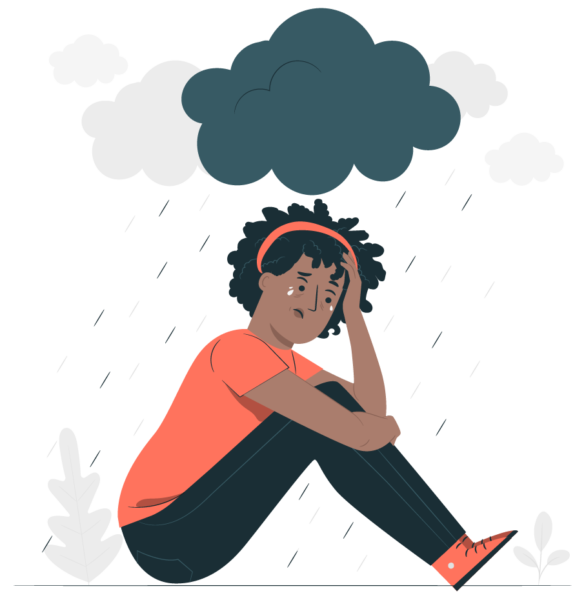
- Suicide is the 10th leading cause of death in the U.S., according to the American Foundation for Suicide Prevention. In 2017, 47,173 Americans died by suicide, and there were an estimated 1.4 million suicide attempts.
- In 2019, depression was associated with 37.9 per cent of all suicides in Australia. Anxiety was associated with 14.9 per cent of all suicides. Substance abuse was associated with 26.3 per cent of all suicides, and 30.6 per cent of male suicides.(source)
Suicide rates by age
- In 2019, the suicide rates were higher among adults ages 45 to 54 years (19.60 per 100,000) and 55 to 64 years (19.41 per 100,000), with the rate highest among adults ages 85 years or older (20.12 per 100,000), the only age group with a rate increase from 19.07 in 2018 to 20.12 in 2019. Younger groups have had consistently lower suicide rates than middle-aged and older adults. In 2019, adolescents and young adults aged 15 to 24 had a suicide rate of 13.95.(source)
Suicide rates by race/ethnicity
- In 2019, the highest U.S. age-adjusted suicide rate was among Whites (15.67) and the second-highest rate was among American Indians and Alaska Natives (13.64). Much lower rates were found among Black or African Americans (7.04) and Asians and Pacific Islanders (7.04).(source)
- Suicide methods:
In 2019, firearms were the most common method of death by suicide, accounting for a little more than half (50. 39%) of all suicide deaths. The next most common methods were suffocation (including hangings) at 28.55% and poisoning (including drug overdose) at 12.89%.(source)
Rates of mental disorders change with age
- Diagnoses of depression and anxiety are more common with increased age.
- Behavior problems are more common among children aged 6–11 years than children younger or older.(source)
chapter 6:
Mood and anxiety disorders
Here are statistics on mood and anxiety disorders.
Know how this impacts people’s lives.
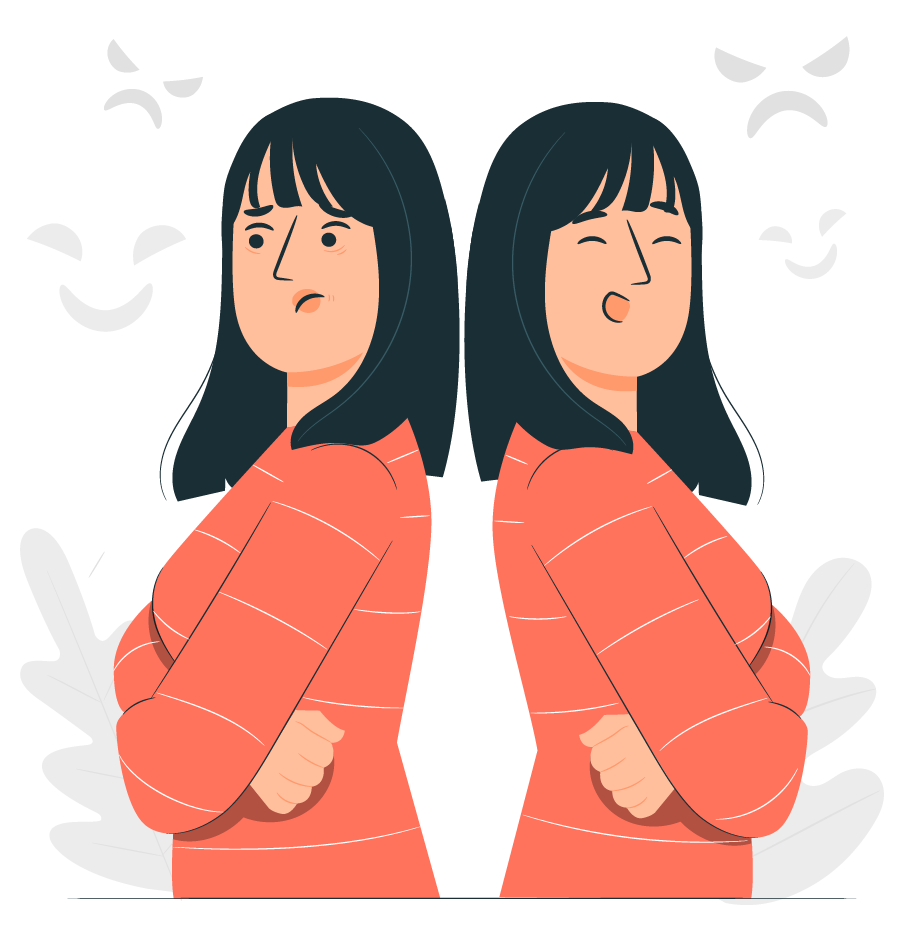
- In 2013, an estimated 3 million Canadians (11.6%) aged 18 years or older reported that they had a mood and/or anxiety disorder.(source)
- Most people with mood and/or anxiety disorder(s) are currently taking, or have taken, prescription medication(s) (93%), but few (20%) have received psychological counselling to help manage their disorder(s).(source)
Mood and anxiety disorders have a major impact on people’s lives
- Of people with mood and/or anxiety disorders, 27% reported that their disorder(s) have affected their lives “quite a bit” or “extremely” in the past 12 months.
- The degree to which their disorder(s) limited their activities varied by type: activities such as recreation, leisure or hobbies were the most limited, followed by social activities with family and friends (Figure 1).(source)
Professional care is essential in the management of mood and anxiety disorders
In the past 12 months,
- 77% reported having seen or talked to a health professional about their mood and/or anxiety disorder(s), with family doctors or general practitioners being the most commonly consulted.
- Almost one-quarter of respondents (23%) reported that they did not consult any health professionals about their disorder(s).
- Percentage of those with mood and/or anxiety disorder(s), 18 years and older, who consulted a health professional (by type) about their disorder(s) in the past 12 months, Canada (excluding territories), 2013(source)
Self-management of mood and anxiety disorders
- Providing Canadians with the information and tools needed to effectively manage mood and/or anxiety disorder(s) will foster recovery and help people living with these disorders achieve their full potential.
- To help manage their disorder(s),
- Two in three respondents (64%) reported that they exercised or participated in physical activity, and the majority of these individuals (98%) stated that they continue to do so at least two to three times a week;
- 71% reported that they adopted good sleep habits,Footnote 4 and 93% reported they still continue to do so;
- Less than a third (28%) reported that they have developed a care or a crisis plan; Footnote 5
- 43% reported that they have engaged in reflective or meditative practices;
- 83% said that they have educated themselves about their disorder(s);
- 14% of respondents with a mood disorder reported that they have used light therapy to manage their disorder.(source)
- This skepticism is reflected in our survey results: Less than four in ten (37%) readers with mood or anxiety disorders were approved for benefits at some point in the process. At the initial application stage, the outlook was particularly dim: More than eight in ten readers (82%) were denied. It’s worth noting, however, that a sizeable portion of those were likely “technical denials,” generally because the applicants didn’t meet the work-history and/or financial requirements for SSDI or SSI. According to government statistics, 45% of SSDI applications filed in 2018 received technical denials; the proportion was lower for SSI applications (18%).(source)
Anxiety Disorders by Race
- The prevalence of anxiety disorders varies by race. One study found that White Americans demonstrate more symptoms of anxiety disorders when compared to minority groups.
- For social anxiety disorder, the prevalence among different races was as follows:
- White Americans: 12.6 percent
- African Americans: 8.6 percent
- Asian Americans: 5.3 percent
- Hispanic Americans: 8.2 percent(source)
- When it came to generalized anxiety disorder, the prevalence was:
- White Americans: 8.6 percent
- African Americans: 4.9 percent
- Asian Americans: 2.4 percent
- Hispanics: 5.8 percent
- Prevalence of panic disorder among different races was found to be:
- White Americans: 5.1 percent
- African Americans: 3.8 percent
- Asian Americans: 2.1 percent
- Hispanic Americans: 4.1 percent
- PTSD prevalence was:
- White Americans: 6.5 percent
- African Americans: 8.6 percent
- Asian Americans: 1.6 percent
- Hispanic Americans: 5.6 percent
chapter 7:
COVID-19
Here are the statistics on anxiety after the infamous Covid-19 hit the globe.
Learn how COVID-19 affected the mental state of people here.

- Rates of depression and anxiety climbed globally by more than 25% in 2020, a devastating ripple effect of the Covid-19 pandemic that has particularly affected women and young people, according to a new study.(source)
- In a systematic review, researchers analyzed data from dozens of studies that reported the prevalence of major depressive disorder and anxiety disorders in the pandemic, calculating that each increased by 28% and 26%, respectively, last year globally. That’s tens of millions more cases of depression and anxiety, in addition to the hundreds of millions already occurring around the world. All told, the researchers estimated there were about 3,153 total cases of major depressive disorder per 100,000 people and 4,802 total cases of anxiety disorders per 100,000 worldwide in 2020, after adjusting for uptick associated with the pandemic.(source)
- During the pandemic, about 4 in 10 adults in the U.S. have reported symptoms of anxiety or depressive disorder, a share that has been largely consistent, up from one in ten adults who reported these symptoms from January to June 2019.(source)
- In the US, 30.9% of those surveyed experienced symptoms of anxiety due to COVID-19. A survey involving people aged 18 and over has shown the link between the COVID-19 pandemic and anxiety. Notably, 40.9% of the survey’s participants reported at least one adverse behavioral or mental health condition. A shocking 10.7% of the respondents considered suicide in the month preceding the survey.(source)
- KFF Health Tracking Poll from July 2020 also found that many adults are reporting specific negative impacts on their mental health and well-being, such as difficulty sleeping (36%) or eating (32%), increases in alcohol consumption or substance use (12%), and worsening chronic conditions (12%), due to worry and stress over the coronavirus.(source)
- During the pandemic, a larger than average share of young adults (ages 18-24) report symptoms of anxiety and/or depressive disorder (56%). Compared to all adults, young adults are more likely to report substance use (25% vs. 13%) and suicidal thoughts (26% vs. 11%). (source)
- Women with children are more likely to report symptoms of anxiety and/or depressive disorder than men with children (49% vs. 40%).(source)
- Compared to nonessential workers, essential workers are more likely to report symptoms of anxiety or depressive disorder (42% vs. 30%), starting or increasing substance use (25% vs. 11%), and suicidal thoughts (22% vs. 8%) during the pandemic.(source)
- During the COVID-19 pandemic, concerns about mental health and substance use have grown, including concerns about suicidal ideation. In January 2021, 41% of adults reported symptoms of anxiety and/or depressive disorder (Figure 2), a share that has been largely stable since spring 2020.(source)
- In another online survey, 8079 junior and senior high school students in China completed assessments about depressive and anxiety symptoms during the COVID-19 epidemic period. Using the Patient Health Questionnaire (PHQ-9) and the Generalized Anxiety Disorder (GAD -7) questionnaire.2 The prevalence of depressive symptoms was 43.7%, anxiety symptoms 37.4%, and both depressive and anxiety 31.3%(source)
- Mental health of children was assessed during the lockdown in Bangladesh via an online survey of 384 parents with children aged 5 to15 years.3 Children’s depression, anxiety, and sleep disorder scores were grouped into severity categories. Severity and percentages of mental health problems in the children were as follows: subthreshold (43%), mild (30.5%), moderate (19.3%), and severe (7.2%).(source)
chapter 8:
Workplace
Here are the statistics of anxiety in the workplace.
Know more about what really induces anxiety in the workplace, so we can think about ways to regulate it.

- The State of Workplace Mental Health in Australia report surveyed 1,041 employees (a mix of lower management and other employees) and found one in five Australians (21%) have taken time off work in the past 12 months because they felt stressed, anxious, depressed or mentally unhealthy. This statistic is more than twice as high (46%) among those who consider their workplace mentally unhealthy. (source)
- Most people have moderate and above degrees of anxiety disorder:
According to the National Institute of Mental Health (NIMH), 43.5 percent of anxiety disorder sufferers have early-onset to mild anxiety, 33.7 percent have moderate anxiety, and 22.8 percent have high to very high degree anxiety. (source)
- In an online poll we conducted, 18 percent of respondents categorized their anxiety as early-onset to mild, 27.5 percent reported moderate anxiety, and 54.5 percent reported high to very high degree anxiety.
- 93 percent of anxiety disorder sufferers in Canada said they are taking, or have taken a medication for their anxiety.[4]

Anxiety Disorder Affects All Ages And Walks Of Life
- Age-specific annual prevalence (%) and rate ratios of the use of health services for mood and anxiety disorders among people aged one year and older, by sex, Canada, 2009-2010 Photograph: The Canadian Government[2](source)
- Below is a graph from the Canadian government showing the percentages of people affected by anxiety disorder based on age:
- Age-specific annual prevalence (%) and rate ratios of the use of health services for mood and anxiety disorders among people aged one year and older, by sex, Canada, 2009-2010 Photograph: The Canadian Government.
- Based on several studies from various locations around the world, the highest incidence of anxiety disorder occurs between the ages of 30 to 40 years old.
- The highest incidence of onset is between the ages of 16 and 26.
- Overall, females experience anxiety disorder more than males. However, males are more reluctant to acknowledge and report anxiety disorder.(source)
Mathematic Anxiety
- Almost 3%–5% of children have math anxiety, as per anxiety in children statistics.
- Math anxiety is an intense feeling of worry or stress when you have to do a math task, which may happen at home or school. What’s more, it may cause children to avoid math, lose interest at school, and do math problems wrong even though they know the correct answers.(source)
- In the United States, it is estimated that a quarter of students attending four-year colleges experience moderate or high levels of math anxiety. And one study found that, for 11% of American university students, the anxiety is severe enough to warrant counseling.(source)
- In a study published in 2018, the researchers showed that it is not only children with low maths ability who experience maths anxiety – more than three-quarters (77%) of children with high maths anxiety are normal to high achievers on curriculum maths tests.(source)
chapter 9:
Anxiety and other medical conditions
Depression often co-occurs with other illnesses and medical conditions.
Here are statistics on anxiety and other medical conditions such as cancer, strokes, heart attacks, HIV, Parkinson’s disease, eating disorders, substance abuse, and PCOD.

- Cancer: 25% of cancer patients experience depression. (National Institute of Mental Health, 2002)
- Strokes: 10-27% of post-stroke patients experience depression. (National Institute of Mental Health, 2002)
- Heart attacks: 1 in 3 heart attack survivors experience depression. (National Institute of Mental Health, 2002) Adults with coronary artery disease are 59 percent more likely to have a future adverse cardiovascular event, such as a heart attack or cardiac death. (National Institute of Health, Heart disease and depression: A two-way relationship, 2017)
- HIV: Depression is the second most common mental health condition among patients living with HIV. (Rabkin, J. G. (2008). HIV and depression: 2008 review and update. Current HIV/AIDS Reports, 5(4), 163-171. doi:10.1007/s11904-008-0025-1)
- Parkinson’s Disease: 50% of Parkinson’s disease patients may experience depression. (National Institute of Mental Health, 2002)
- Eating Disorders: 33-50% of anorexia patients have a comorbid mood disorder, such as depression. (Ulfvebrand, S., Birgegard, A., Norring, C., Hogdahl, L., & von Hausswolff-Juhlin, Y. (2015). Psychiatric comorbidity in women and men with eating disorders results from a large clinical database. Psychiatry Research, 230(2), 294-299.)
- Substance use: Over 20% of Americans with an anxiety or mood disorder such as depression have an alcohol or other substance use disorder (both alcohol and other substances) experience depression. (National Epidemiologic Survey on Alcohol and Related Conditions 2001 – 2006)
- Diabetes: 1/3 of persons with diabetes experience depression. (Holt RI, de Groot M, Golden SH. Diabetes and depression. Curr Diab Rep. 2014 Apr 18;14(6):-. doi: 10.1007/s11892-014-0491-3.)
- Polycystic ovary syndrome: About 20% of women living with polycystic ovary syndrome experience depression. (source)
chapter 10:
Social media
Here are statistics on anxiety caused by social media.
Learn how social media can affect the anxiety levels of teens.
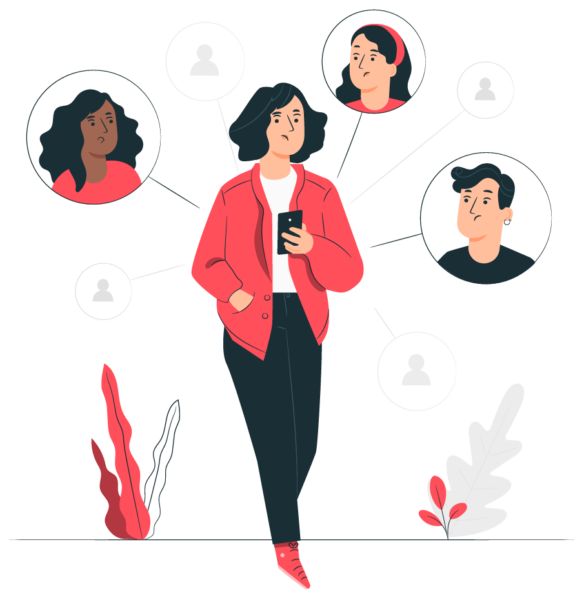
- The rate of adolescents reporting symptoms of major depression in a given year increased by 52% from 2005 to 2017. From 2009 to 2017, it grew by 63% in adults ages 18 to 25. Experiencing psychological distress in a given month grew 71% in young adults from 2008 to 2017. Even worse, the rate of suicidal thoughts in young adults increased 47% during that same time.(source)
- Almost 25% of teens view social media as having a negative effect.
- Between 2012 and 2015, depression in boys increased by 21% and in girls by 50%.
- By 2015, 92% of teens and young adults owned a smartphone. But, as smartphone use increased, so did feelings of depression.
- A 2017 study of 8th to 12th graders found that high levels of depressive symptoms increased by 33% between 2010 and 2015. The suicide rate for girls in this age group increased by 65%.
And it’s only gotten worse.
- Child suicide rates increased by up to 150%, and self-harm by girls ages 10 to 14 nearly tripled. These patterns point to social media.(source)
- 13% of kids ages 12-17 report depression and 32% report anxiety. 25% of 18 to 25-year-olds report mental illness. These age groups report high usage of social media.
- 59% of US teens experienced cyberbullying or online harassment. 90% say they think this harassment is a problem that affects other people their age. 63% say that it’s a major problem.(source)
Separation Anxiety
- Separation anxiety is the most common type of anxiety disorder in children. It accounts for half of all referrals for mental health treatment for anxiety in children. Approximately 4% of children ages 7–11 have the disorder. It affects girls and boys at the same. Between 50–75% of children with separation anxiety come from homes with a low socioeconomic status.(source)
Separation Anxiety in Adolescents
- Separation anxiety is much less common in teenagers than in younger children. About 1.6 % of adolescents have the disorder. It’s more common among younger teens; separation anxiety occurs in about 3.9% of adolescents aged 12–14 and only in about 1.3% of those aged 14–16.(source)
- Around 60% of children with separation anxiety also have another anxiety disorder while 30% have two or more others, and one-third also have depression.(source)
- Worry and anxiety are higher among women than men, but so too are feelings of gratitude. Men are more likely than women to say they’re optimistic:

Conclusion
I hope you found this ultimate list of coaching statistics interesting and insightful.
I would like to hear your thoughts on it. A quick comment would do.
Comment below and let me know if at all I have missed anything. (it happens)
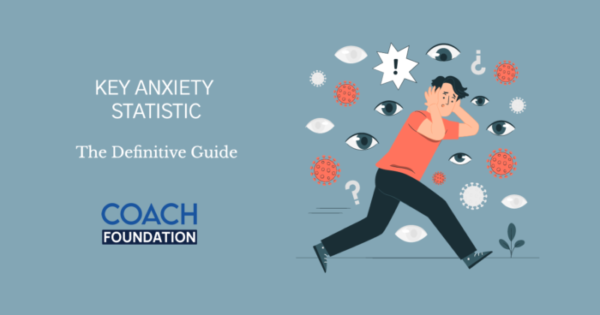

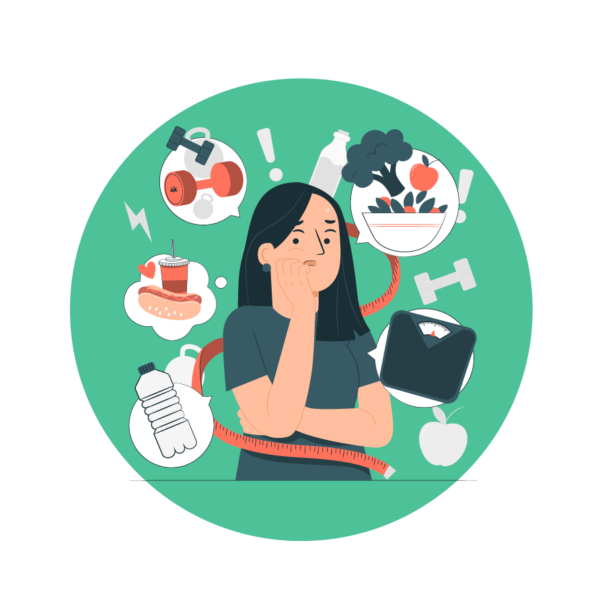

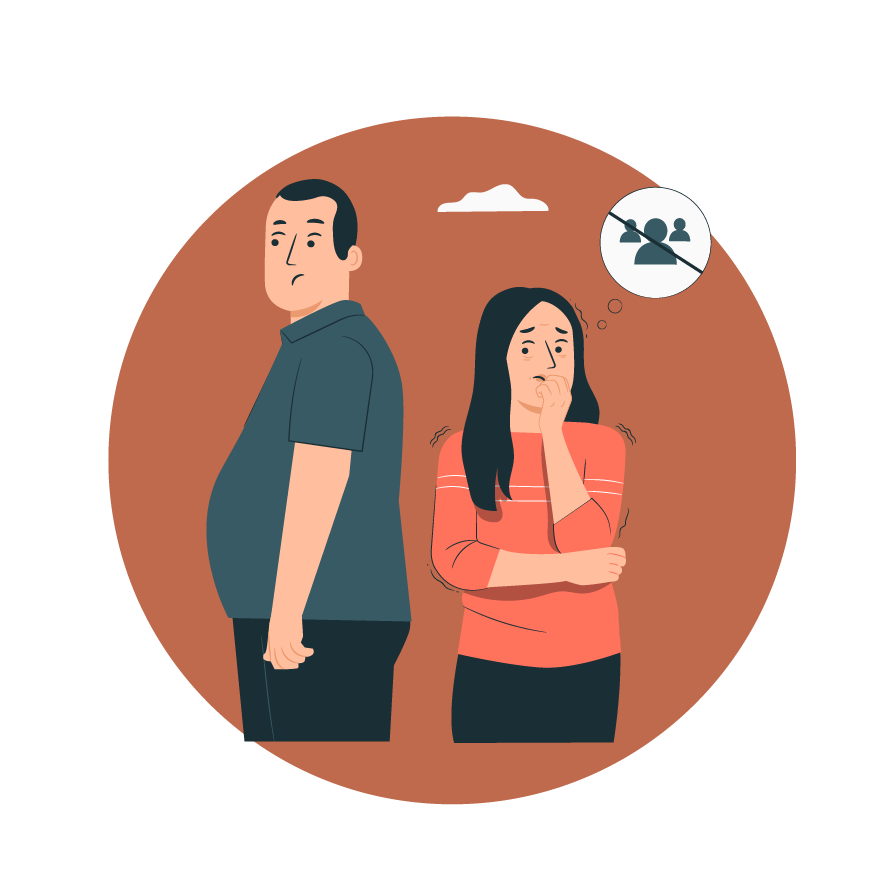

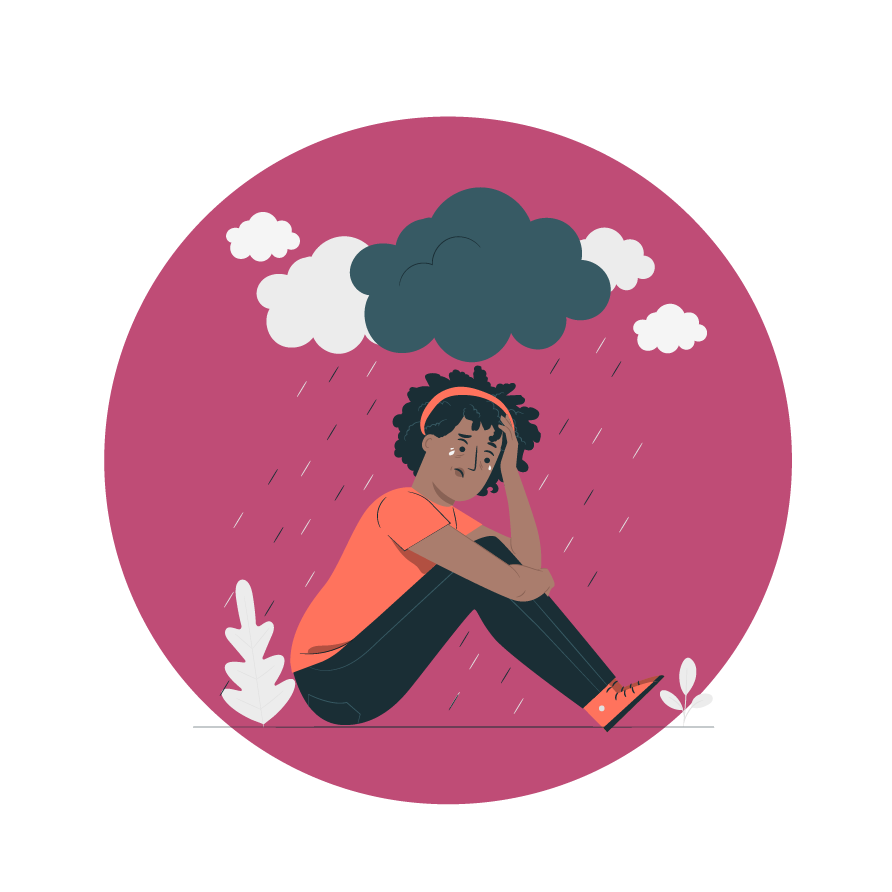





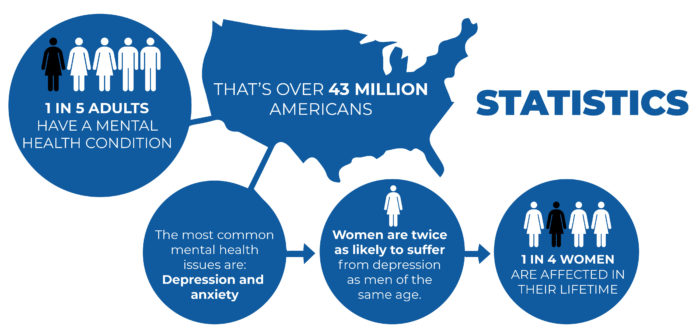
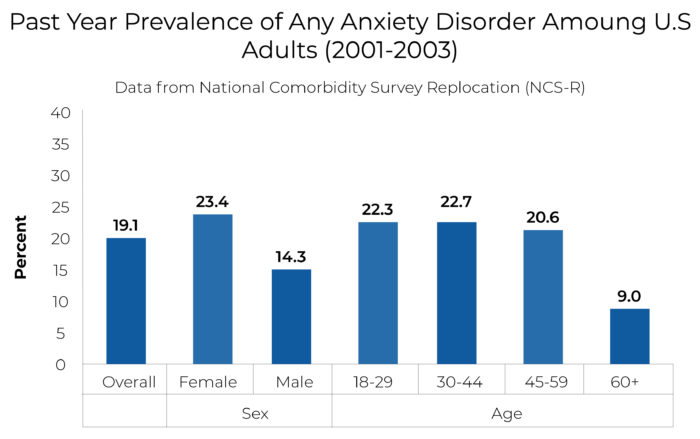
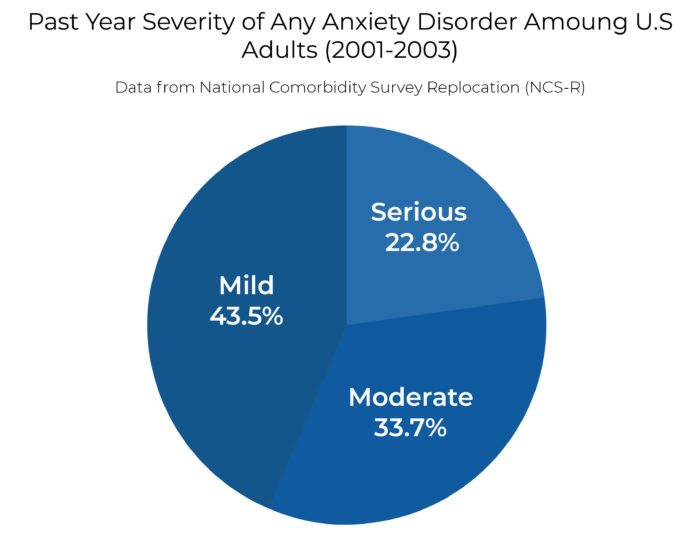

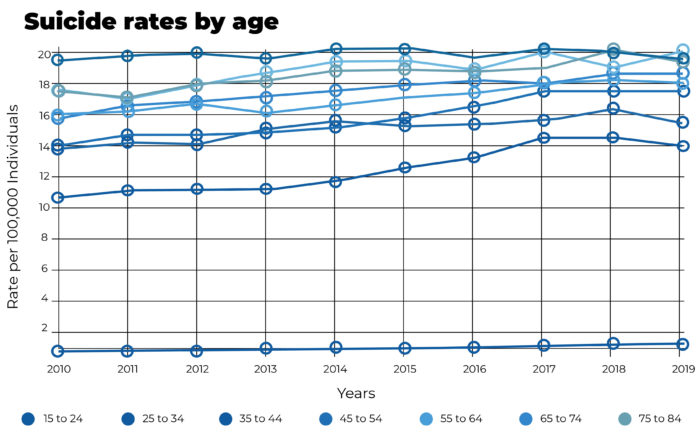
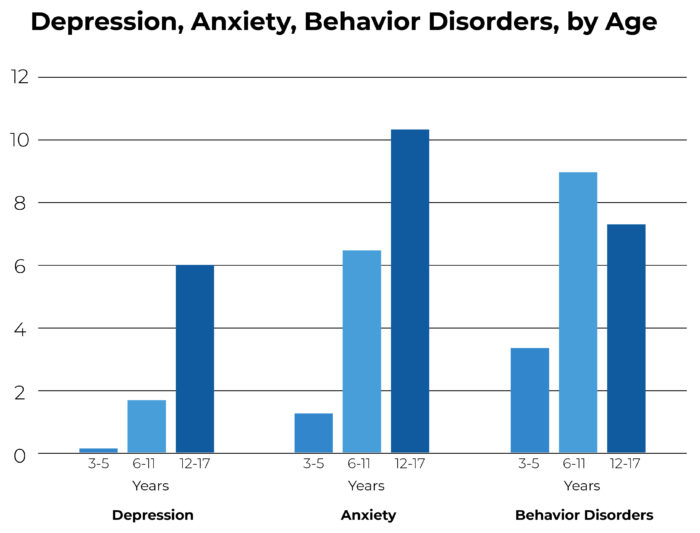
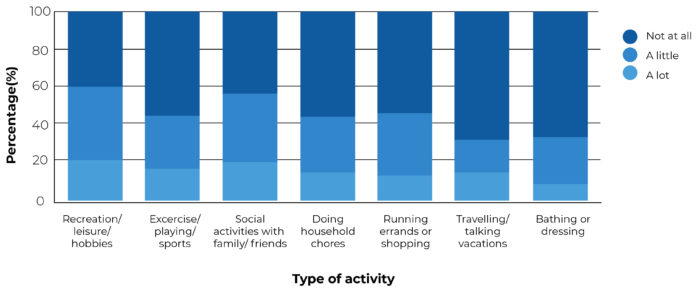
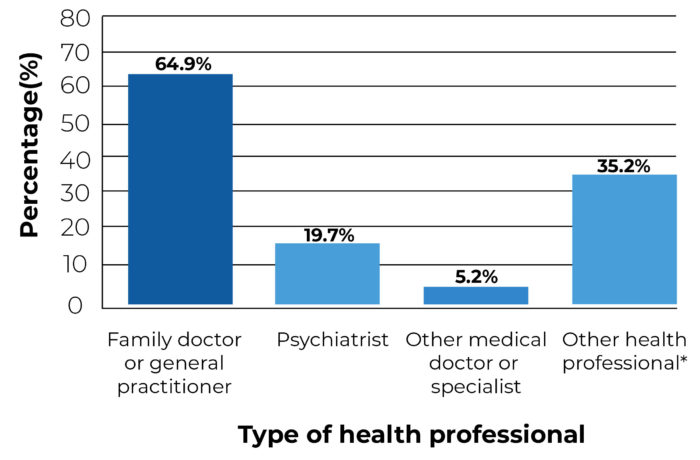
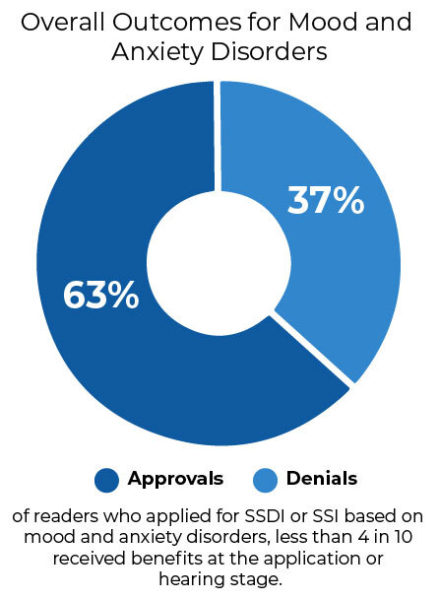
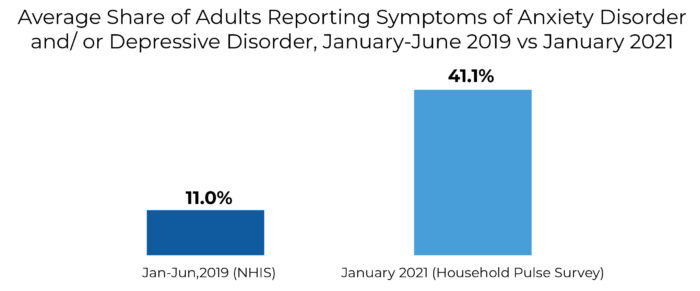
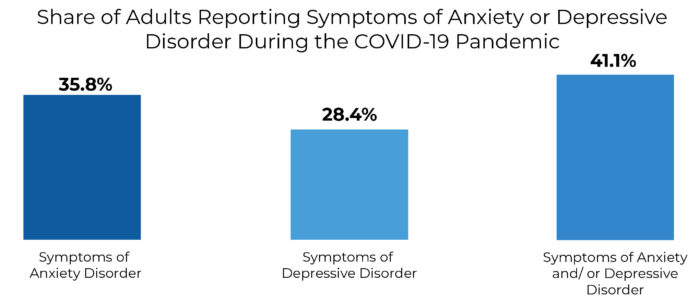
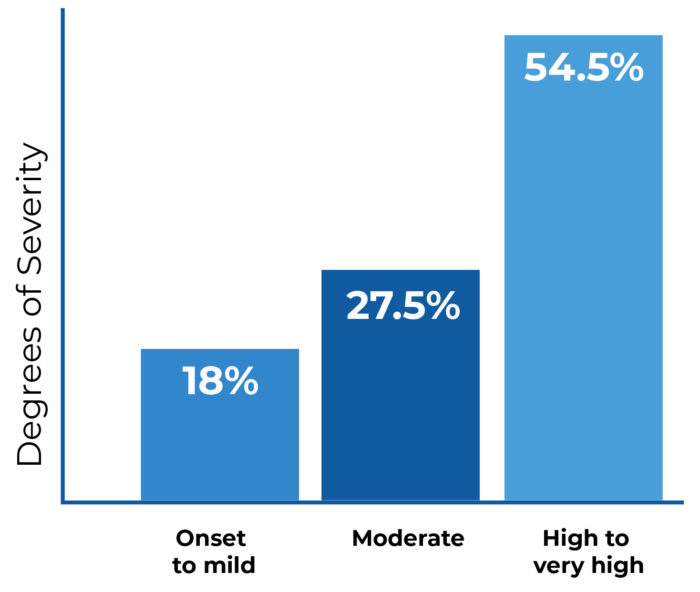
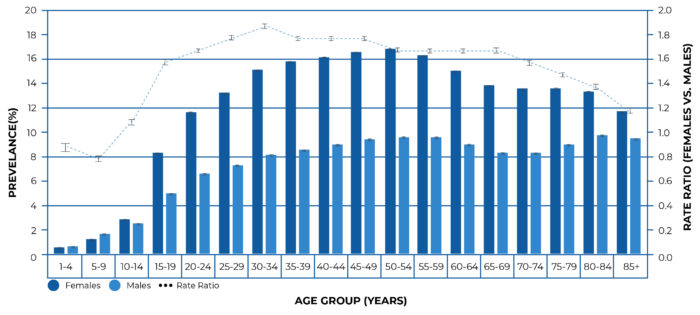
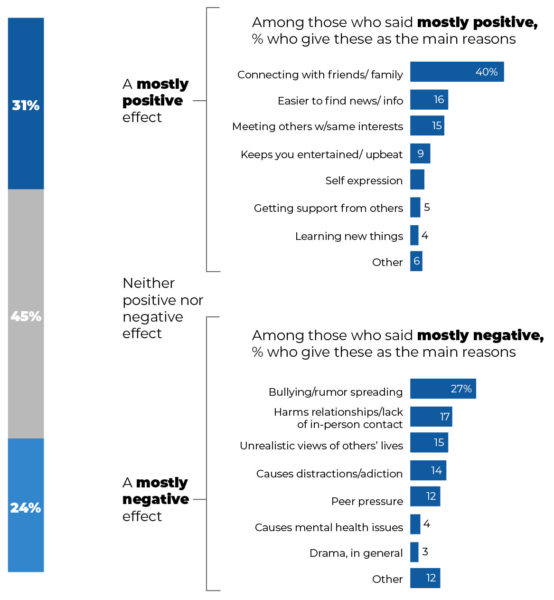






Good work!